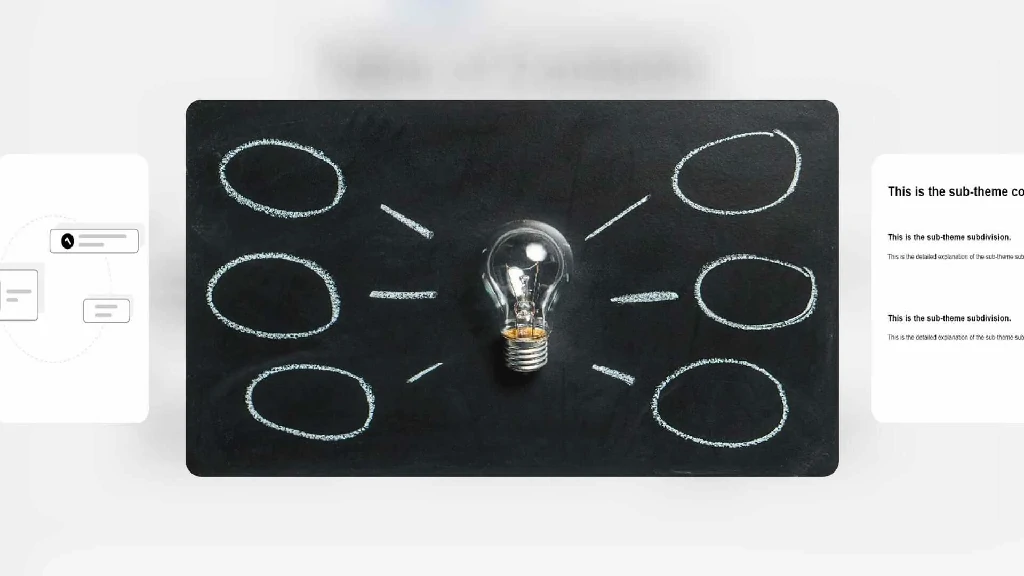
The psychologist Albert Mehrabian once proposed the formula "7-38-55": "The total effect of the message = 7% of the written word + 38% of the pitch + 55% of the facial expression". In the speaker's language skills, the performance of body language occupies an important position. In communication, in addition to what is verbalized, factors such as the speaker's tone of voice, body language and appearance are very important. Presenters with poor posture, bowed heads and scowls, and no smiles often fail to give an excellent presentation. So, in this blog post, we’ll look at the importance of body language in presentation and how to use body language in presentation.
The functions of body language in presentation:
The importance of a speaker's body language in a speech cannot be ignored. Body language determines to some extent the level of linguistic competence and has a very important impact on speech.
1.Emphasize ideas: Through appropriate gestures and movements, speakers can better emphasize their ideas and make them more vivid and powerful. For example, when a speaker talks about an important point, he or she can use gestures to strengthen the tone of voice and the power of expression.
2.Enhance the power of expression: In a speech, facial expressions and eyes can convey the speaker's feelings and attitudes. When the speaker has a serious expression and a firm gaze, it can give people an impression of confidence and concentration and increase the persuasive power of the speech.
3.Establishing a connection with the audience. Body language can leave a lasting impression on the audience. Through appropriate eye contact and facial expressions, the speaker can establish a close connection with the audience and make the audience feel respected and valued. This interaction enhances the audience's trust and empathy for the speaker.
4.Enhance attractiveness. Body language enhances the impact during a presentation. The correct use of body language can increase the attractiveness and entertainment of the speech. Some interesting gestures and movements can attract the audience's attention and make the speech more vivid and interesting.
5.Manage nervousness: Paying attention to your body language can help manage nervousness and anxiety during presentations. Adopting confident and open body language techniques can help alleviate nerves and project a calm and composed demeanor, even in high-pressure situations.
6.Build trust and likeability: Positive body language builds trust and likability with your audience. Authentic and genuine gestures, facial expressions, and vocal cues create a sense of authenticity and sincerity, fostering stronger connections and relationships with your audience members.
The different kinds of body language in presentation:
When giving a speech, we should not only pay attention to the language of our speech, but also to our body language. Different postures serve different purposes. Here are some common body languages used in presentation.

1.Smile: Smiling is one of the easiest and most effective ways to bring people together. When we give a speech, we must always enter with a smile, and when you pass on a smile to others, they will pass on the same smile to you.
2.Eyes: By making eye contact during a speech, we can quickly get feedback from the audience. Through our eyes we can read everyone's heart. Using the eyes well can make our speech more perfect. A good speaker through the eyes can be timely assessment of the content of their own speech.
3.Gestures: In the speech, we can express our ideas more intuitively through gestures, can be more conducive to the audience's acceptance, because gestures are very impactful, through gestures we will achieve unexpected results.
4.Pace: The pace of a confident person is also very stylish. Speech time we will often walk around the stage, often changing positions, which requires us to focus on our pace, such as how to walk, towards where, how to turn.
5.Voice Tone: While not strictly body language, your voice tone and inflection are closely linked to your physical presence and can greatly influence how your message is received. Varying your tone, pitch, and pace can add emphasis, convey emotions, and maintain audience interest.
6.Space and Proximity: How you use space and proximity can also convey messages. Standing too close to someone might be perceived as invasive, while maintaining an appropriate distance can signal respect and professionalism.
How to use body language to enhance presentation effectively?
1.Maintain a strong posture. Stand straight with your shoulders back and head held high. Good posture exudes confidence and authority, which immediately grabs the attention of your audience.
2.Make eye contact. Establish a connection with your audience by making eye contact with people in the room. This conveys confidence, sincerity, and a genuine interest in engaging with your audience.
3.Use gestures with purpose. Use hand gestures to emphasize key points, illustrate concepts, and add energy to your presentation. Make sure your gesture is natural and in sync with your speech, and avoid excessive or distracting movements.
4.Smile and use facial expressions. Smile brightly to create a positive and welcoming atmosphere. Use facial expressions to convey passion, empathy, and conviction to captivate your audience and keep them engaged.
5.Move with intention. Use movement on stage to hold the audience's attention and highlight powerful ideas. Move purposefully to new areas of the stage to transition between topics or to engage different parts of the audience.
6.Modulate your voice. Vary your tone, pitch, and tempo to add emphasis, convey emotion, and maintain interest. Use pauses strategically to reinforce important points and create suspense.
7.Mirror the audience's body language. Pay attention to your audience's body language and adjust your own accordingly. Mirroring their gestures, posture, and energy levels can help build rapport and create a sense of connection.
8.Use a welcoming body language. Maintain an open and welcoming posture, with arms relaxed at your sides or gesturing openly. Avoid crossed arms or defensive postures, which can create barriers between you and your audience.
9.Practice awareness breathing. Deep, diaphragmatic breathing can help calm nerves and project confidence. Practice breathing exercises before your presentation to center yourself and regulate your energy levels.
10.Stay present and engaged. Be fully engaged and present in the moment with your audience. Show active listening by nodding, smiling, and responding appropriately to audience feedback or questions.
Structure your presentation in Smallppt.
After learning about body language in presentation, you may ready to have a presentation. Try to use Smallppt to have an effective way in PowerPoint generation. Smallppt's AI PowerPoint is a game-changer in the realm of professional presentations. Its innovative features, collaborative capabilities, and focus on aesthetics redefine the standards of presentation creation. Professionals can now achieve excellence effortlessly with this advanced ai presentation tool. It transforms the tedious task of presentation creation into a seamless and enjoyable process. With a focus on design, content, and collaboration, Smallppt ensures that professionals can effortlessly craft presentations that leave a lasting impression.




